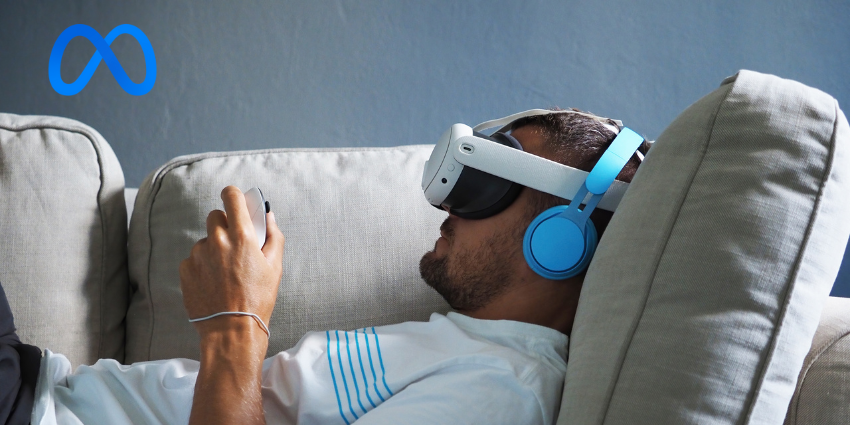The process feels fairly familiar when you walk into most stores these days. After selecting a product and paying for it, you leave. Mission accomplished. But is “familiar” enough in a world where consumers can purchase nearly anything with a tap from the comfort of their couch? The priority has shifted from convenience to genuine connection. Today’s consumers want more than just products; they want to feel something. They want to be seen, understood, even surprised. And the stores that get this? “It’s not the stores with the quickest checkout lines that win—it’s the ones that create moments customers actually remember.
The real question then becomes: Is your store just a place where purchases happen, or is it a space where something meaningful unfolds?
The Experience Economy and What It Means for Retail
Spending habits are evolving—less on stuff, more on stories and experiences. This shift in priorities isn’t random— it’s a reflection of the experience economy. In 1998, B. Joseph Pine II and James H. Gilmore popularised the term “experience economy,” which they later expanded upon in their book, in an article published in the Harvard Business Review. In his book, B. Joseph Pine II made the case that companies should concentrate on giving clients distinctive experiences in order to set themselves apart from competitors. He observed that people wanted to purchase an experience rather than just a product. Late in 2019, a revised edition with a new preface was published..
“We are now in an Experience Economy where experiences have become the predominant economic offering that people prefer — experiences over things.”
This is more true than ever in the current situation.
To make this shift easier to grasp, consider how we watch movies—it mirrors the evolution of economic progress. Entertainment began as a community affair—stories shared around a fire, with no industry, just pure creativity. Then came mass production: black-and-white silent films brought cinema to the masses. The experience was simple, standardized, and accessible. With the service economy, blockbuster cinemas changed the game. In addition to a movie, multiplexes charge for convenience, comfort, and quality. In today’s experience economy, total immersion is crucial. Motion seats, surround sound, and even synchronised fragrances are offered by IMAX and Dolby. People don’t just watch the film—they feel it.
This same transformation is unfolding in retail. Just as moviegoers now seek a heightened, emotional experience—not just a seat and a screen—shoppers today want more than shelves and checkouts. This brings us to experiential retail.
Defining Experiential Retail—What It Is (And What It Isn’t)
Experiential retail is retail’s answer to the experience economy. Brick-and-mortar stores are ideal for creating immersive, sensory experiences, which are really about making in-store experiences that are memorable and well beyond mere product sales. The idea is to move beyond traditional transactional shopping and leave a lasting impression on customers, solidify brand relationships, and foster loyalty. Nike House of Innovation is one, whereby customers get to try gear, personalize items, and learn about the brand’s history. Similarly, LEGO’s flagship stores encourage visitors to play, construct, and even have their masterpieces scanned using augmented reality.
Experiential retail is just as important in online shopping as it is in physical stores. For example, a furniture retailer may use augmented reality to show customers how a couch would fit in their living room, or a beauty brand may offer virtual makeup try-ons.
Fancy tech, right? – Partly, yeah
Experiential retail blends technology, tailored services, and interactive features to create a more dynamic shopping experience. Smart mirrors help you try on outfits without changing. Augmented Reality (AR) lets you see how a couch looks in your living room before you buy it. Touchscreens offer product deep-dives, reviews, and recommendations on demand. VR transports you into brand worlds – whether it’s hiking a virtual trail in your new boots or designing your dream car in real time.
Technology helps—but it’s not the heart of it
Experiential retail is about designing a space that invites people to explore, touch, try, and engage. In addition to selling, it entails having employees who tell stories, provide advice, and build associations. Its interactive features, well-considered details, and atmosphere attract customers to stay a bit longer and return for more than just shopping, to experience something they can’t get online.
The Business Case: Why Experiences Drive Results
Let’s talk ROI—the real impact of making your store unforgettable.
You’ve probably heard a dozen times that “experiences matter.” But this isn’t just feel-good fluff or trendy retail speak. It’s backed by real business outcomes – higher conversion, bigger basket sizes, more loyalty, and organic growth. The proof? Let’s zoom in on a brand that’s made immersive, experience-first retail part of its DNA, and is reaping the rewards.
The Experience:
In IKEA’s concept stores, such as IKEA Hej HOME you don’t just see furniture; you walk through realistic home setups that inspire ideas. You interact with staff who’ll help you plan your space.
The Result:
- Customers who visualize their space with IKEA are more confident in their purchases and more likely to buy.
- The immersive experience drives larger basket sizes and repeat visits, especially for life-stage milestones (moving, redecorating, having a baby).
The ROI of Experience
It’s a fact that customers who visit stores for in-store experiences stay after they’ve finished browsing. Multiple tenants benefit from the additional time because it increases dwell time, foot traffic, and exposure throughout the entire shopping centre. But the impact goes beyond the store floor. Physical experiences also boost online performance—retailers report significant increases in local e-commerce sales following the launch of experiential stores. Quantitatively, you’ll see higher conversion rates, increased average spend, and more frequent repeat purchases. Qualitatively, it’s about stronger brand perception, deeper customer loyalty, and more organic word-of-mouth.
In short, experiential retail doesn’t just feel good – it performs.
Where to Begin: Practical Steps for Small and Medium Retailers
Yes, even without a flagship budget, experiential retail is possible.
When retailers hear the term “experiential retail,” they frequently imagine massive installations, virtual reality technology, or shops that resemble art galleries more than actual retail establishments. In actuality, experiential retail doesn’t need to be extravagant in order to be effective. Smaller and medium retailers actually have an advantage because they are more approachable, adaptable, and better equipped to try new things.
Experiential features can dazzle—but only if the core experience is solid. Look before you leap.
- Reimagine your space with purpose. What kind of feeling should greet your customers? Cozy, inspired, curious, engaged—or maybe a blend of all those emotions?
- Don’t go all in—start with one moment – You don’t need a full-blown overhaul. A sampling table, a “try it on” nook, or a small DIY station is enough to spark engagement.
- Train staff to be storytellers, not just sellers – Equip your team to share the why behind products, not just the price and features.
- Keep it simple, keep it local – host a workshop, invite a local maker, and do a quick product demo. Even a short Sunday morning event can create buzz and build community.
- Start small, improve often – Test one experience at a time. Watch what works, tweak it, and keep evolving.
Closing Thoughts: Rethinking Your Store’s Purpose in an Experience-First World
Experience economy – or retail’s version of it, experiential retail – has changed one thing for sure: the role of the brick-and-mortar store. It’s no longer just a place to stock shelves. It’s now a stage, a studio, a community hub—a story in motion. Today’s consumers want more than products; they want experiences, something they might share on social media or remember long after they’ve left. And in this experience-first world, technology isn’t the star of the show—it’s the enabler. The best stores don’t just use tech to dazzle. They use it to create more profound, brilliant, personal moments. Tech that invites people to explore, connect, and feel something real. Because that’s what today’s customers are asking for: To connect, to be surprised, to remember.







